Home>Interior Design>Distinctive Trim Work Ideas
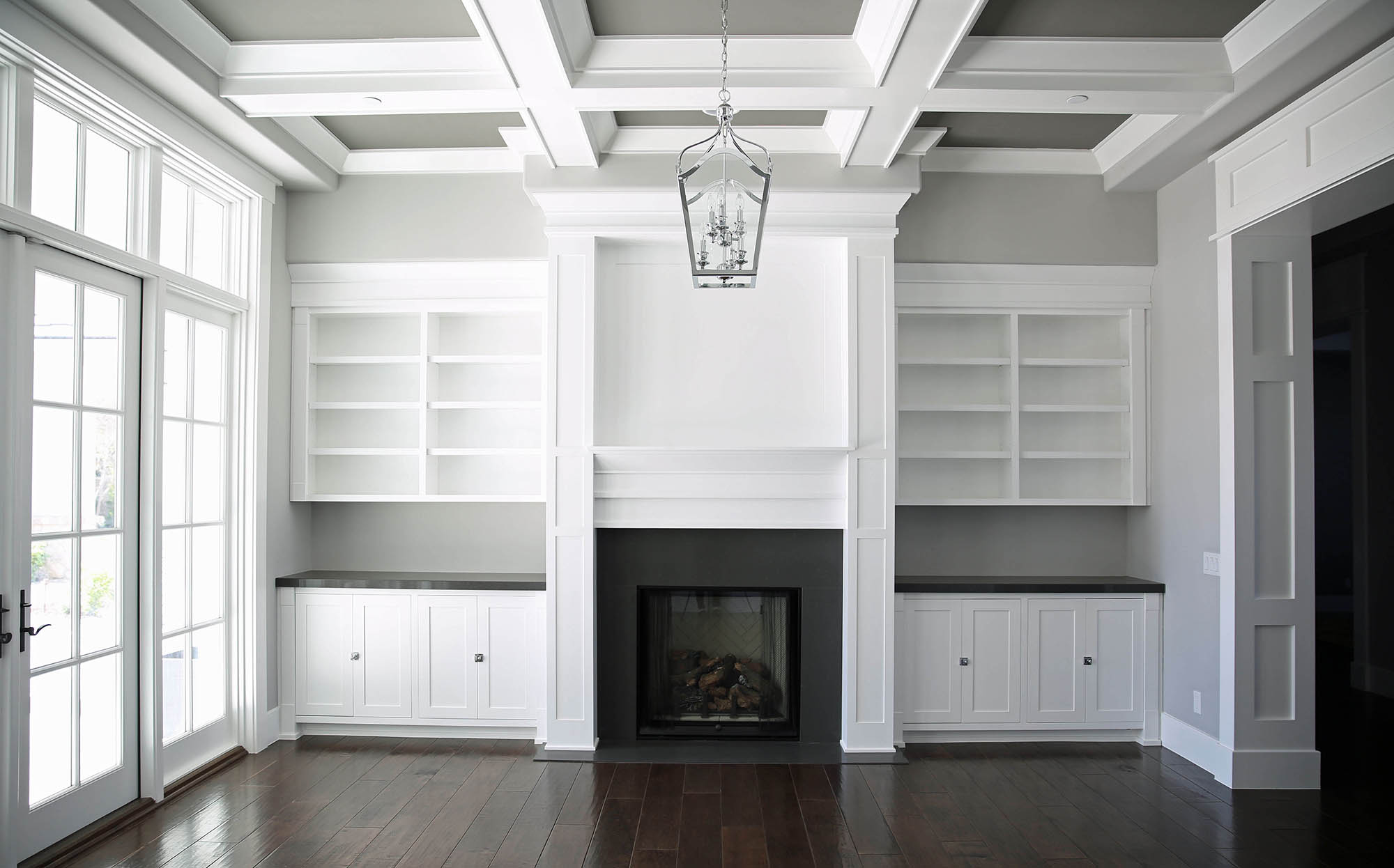

Interior Design
Distinctive Trim Work Ideas
Modified: May 6, 2024
Discover unique and creative interior design ideas with distinctive trimwork for your home. Enhance your space with exquisite trim details that add character and style to any room.
(Many of the links in this article redirect to a specific reviewed product. Your purchase of these products through affiliate links helps to generate commission for Storables.com, at no extra cost. Learn more)
Introduction
Welcome to the world of interior design, where every element plays a significant role in bringing a space to life. While furniture, colors, and lighting often take center stage, one aspect that should not be overlooked is trimwork. Distinctive trimwork can elevate the look and feel of any room, adding depth, character, and a touch of sophistication.
Trimwork refers to the decorative elements that are applied to walls, ceilings, windows, and doors. It serves as the finishing touch that brings a sense of completion and refinement to a space. From crown molding to intricate panel moldings, the possibilities for enhancing a room with trimwork are endless.
In this article, we will explore twenty distinctive trimwork ideas that can transform your home into a visually stunning and unique space. Whether you prefer a classic and elegant look or a more contemporary and eclectic style, there is sure to be a trimwork idea that resonates with your design aesthetic.
So let’s dive in and discover the many ways you can incorporate trimwork to add depth, character, and architectural interest to your home.
Key Takeaways:
- Elevate your space with distinctive trimwork ideas such as crown molding, wainscoting, and ceiling medallions to add elegance, architectural interest, and a touch of personal style to your home.
- Transform ordinary spaces into extraordinary ones by incorporating custom patterns, decorative columns, and fireplace surrounds, creating visually stunning and personalized trimwork features that showcase your individuality and design vision.
Crown Molding
Crown molding is a classic and elegant trimwork idea that adds a touch of luxury to any room. It is typically installed where the walls meet the ceiling, creating a smooth and seamless transition from wall to ceiling. Crown molding can be made from various materials such as wood, plaster, or polyurethane, allowing for a wide range of design options.
One of the main benefits of crown molding is that it visually enhances the height of a room. By extending the walls vertically, crown molding creates an illusion of higher ceilings, making the space feel more open and grand. It can be especially effective in rooms with low ceilings, adding a sense of airiness and spaciousness.
Crown molding comes in various styles and sizes, allowing you to choose the one that best suits your design aesthetic. From simple and streamlined profiles to elaborate and ornate designs, there is a crown molding style to match every interior style. Traditional homes often feature intricate, detailed crown moldings, while modern and minimalist spaces may opt for cleaner, more minimalistic profiles.
In addition to its aesthetic appeal, crown molding also serves a practical purpose. It helps to conceal any gaps or imperfections between the wall and the ceiling, giving the room a more polished and finished look. Crown molding can also be used to hide wiring or lighting fixtures, adding a functional aspect to its design.
When installing crown molding, it is essential to consider the size and proportion of the room. A large room may require wider and more substantial crown molding to maintain a balanced and proportional look, while a smaller space may benefit from narrower and less elaborate designs.
Overall, crown molding is a timeless trimwork idea that adds character, elegance, and architectural interest to any room. Its versatility and ability to enhance the overall aesthetics of a space make it a popular choice among homeowners and interior designers alike.
Baseboards
While often overlooked, baseboards play a crucial role in the overall look and feel of a room. Baseboards are the trimwork installed at the bottom of walls, where they meet the flooring. They serve as a transition between the vertical walls and horizontal flooring, creating a clean and finished appearance.
Baseboards can be both functional and decorative. On a functional level, baseboards protect the walls from scuffs, scratches, and wear caused by furniture, vacuums, or foot traffic. They act as a barrier, preventing damage to the drywall and providing a smooth surface for cleaning and maintenance.
From a design perspective, baseboards add depth and visual interest to a space. They can be simple, with clean lines and minimal details, or they can be more ornate, featuring intricate patterns or profiles that match the style of the room. The height and width of baseboards can also vary, allowing you to choose the proportions that best complement the size and scale of your space.
When selecting baseboards, it’s important to consider the overall style and aesthetic of your home. For a classic and traditional look, you may opt for baseboards with more decorative details such as beveled edges or sculpted profiles. In contemporary or minimalist spaces, simple and streamlined baseboards can create a clean and understated look.
Baseboards can be made from various materials such as wood, MDF (medium-density fiberboard), or PVC. Wood baseboards are popular for their natural warmth and beauty, while MDF and PVC baseboards offer durability and affordability.
During installation, it’s essential to ensure that the baseboards are properly aligned and level with the flooring. This creates a seamless transition and prevents any gaps or unevenness. Baseboards should also be securely fastened to the wall using nails or adhesive to ensure stability and longevity.
Overall, baseboards are a subtle yet impactful element that adds a finishing touch to any room. They provide a clean and polished look while protecting the walls from everyday wear and tear. With a wide range of styles, materials, and sizes available, baseboards offer endless design opportunities to enhance the overall aesthetics of your space.
Wainscoting
When it comes to enhancing the look and feel of a room, wainscoting is a timeless and sophisticated trimwork idea. Wainscoting is a decorative wall treatment that involves covering the lower portion of the wall with wood, paneling, or wallpaper. It adds architectural interest, texture, and depth to any space, creating a refined and elegant ambiance.
Wainscoting typically extends from the baseboard to a certain height on the wall, often reaching chair rail or mid-wall height. The upper portion of the wall above the wainscoting is left uncovered, providing an opportunity to showcase paint, wallpaper, or artwork.
One of the significant advantages of wainscoting is its versatility in design. It comes in various styles, materials, and finishes to suit different interior aesthetics. Raised panel wainscoting is a popular choice for traditional and formal settings, featuring elaborately carved panels that add depth and complexity. Beadboard wainscoting, with its classic vertical grooves, brings a charming and cottage-like appeal to any room. Flat panel wainscoting offers a more contemporary and streamlined look, perfect for modern interior styles.
In addition to style, wainscoting also offers practical benefits. It can protect the lower portion of the wall from scratches, scuffs, and wear caused by furniture or daily activities. It also adds an extra layer of insulation and soundproofing to the room, creating a more comfortable and cozy living environment.
Installing wainscoting requires careful planning and precise measurements. The height of the wainscoting will depend on the overall proportions of the room and the desired aesthetic. It’s important to ensure that the wainscoting is level and properly aligned with the baseboards and chair rails for a polished and cohesive look.
Wainscoting can be left natural or painted to match the color scheme of the room. White wainscoting is a popular choice as it creates a clean, classic, and timeless look. However, you can also experiment with bold colors or contrasting hues to make a statement and add visual interest to the space.
Whether you want to add a touch of elegance to a dining room, create a cozy atmosphere in a bedroom, or bring a sophisticated feel to a hallway, wainscoting is a versatile and visually striking trimwork idea. Its ability to transform a plain wall into a focal point makes it a go-to choice for interior designers and homeowners looking to elevate their spaces.
Chair Rails
Chair rails are a classic and practical trimwork idea that not only adds a decorative element to a room but also helps to protect the walls from potential damage caused by furniture. Chair rails are horizontal moldings that are typically installed at the midway point of a wall, separating the upper and lower portions.
Traditionally, chair rails were used to protect walls from chairs scraping against them. Today, they serve as a design feature that adds visual interest and an extra layer of sophistication to a space. Chair rails come in various styles and profiles, allowing you to choose one that complements your overall design aesthetic.
One of the primary benefits of chair rails is their ability to visually divide a wall, creating different zones or visual layers within a room. By separating the upper and lower portions of the wall, chair rails can add depth and dimension, making a space feel more dynamic and visually appealing.
Chair rails are often paired with other trimwork elements, such as wainscoting or wallpaper, to create a cohesive and harmonious look. They can enhance the elegance of a dining room when combined with wainscoting, or add a touch of sophistication to a hallway when paired with a wallpapered upper wall.
When selecting chair rails, consider the height and proportions of the room. The standard height for chair rails is typically 32 to 36 inches from the floor, but you can adjust the height to fit your specific space and desired aesthetic. Taller ceilings may require a higher chair rail to maintain proper proportions, while lower ceilings may benefit from a lower chair rail placement.
Chair rails can be made of various materials, including wood, MDF, or even composite materials. The choice of material will depend on your budget, design preferences, and durability requirements.
When installing chair rails, it is essential to ensure they are level and securely attached to the wall. Proper measurements and precision are key to achieving a professional and polished look.
Overall, chair rails are an excellent trimwork idea that adds elegance, visual interest, and protection to your walls. Whether used alone or in combination with other trimwork elements, chair rails can transform a plain wall into a sophisticated and visually appealing feature in any room.
Read more: Distinctive Pergola Ideas
Picture Rails
Picture rails are a unique and versatile trimwork idea that serves both functional and decorative purposes. Picture rails are horizontal moldings installed near the top of a wall, typically around 12 to 18 inches below the ceiling. They are designed to hold and display artwork, photographs, mirrors, or other decorative items without the need for nails or screws directly into the wall.
One of the key benefits of picture rails is their flexibility in displaying and rearranging artwork. Unlike hanging artwork directly on the wall, picture rails allow for easy adjustment and swapping of artwork without damaging the wall surface. This makes them an ideal choice for those who like to change their wall decor frequently or showcase a rotating collection of pieces.
Picture rails provide a clean and elegant way to display artwork, creating a gallery-like feel in any room. By positioning the artwork at eye level, picture rails draw attention to the walls and create visual interest. They also allow for the creation of visually pleasing arrangements, as multiple pieces of artwork can be hung from a single picture rail, creating a cohesive and curated look.
Aside from their decorative function, picture rails also offer practical benefits. They provide a secure and stable way to hang artwork, preventing potential wall damage from nails or screws. Picture rails can also be used to hang other decorative items such as mirrors or decorative plates, adding another layer of interest and personalization to a space.
Choosing the right picture rail style and material is important to ensure it complements your interior design. Picture rails can be made of various materials, including wood, metal, or synthetic materials. Wood picture rails offer a classic and traditional look, while metal picture rails can provide a more modern and industrial aesthetic.
When installing picture rails, it’s important to ensure they are level and correctly anchored to the wall. The height at which the picture rail is installed will depend on the size and scale of your artwork, as well as the overall proportions of the room.
Overall, picture rails offer a practical and visually appealing way to display artwork and enhance the walls of a room. Their versatility, ease of use, and ability to create unique and personalized displays make them a popular choice for homeowners and art enthusiasts alike.
Window Casings
Window casings are a key component of interior trimwork that helps create a polished and cohesive look around windows. Window casings are the decorative frames that surround the window opening, providing both aesthetic appeal and functional benefits.
One of the primary purposes of window casings is to conceal any gaps or imperfections between the window frame and the wall. They create a seamless transition between the window and the surrounding wall, giving a clean and finished appearance to the space.
Window casings come in a variety of styles and designs, allowing you to match them to the overall interior aesthetic of your space. Traditional window casings often feature more intricate and ornate details, such as beveled edges or decorative moldings, which add a touch of elegance and sophistication. In contrast, modern and minimalist casings may have clean lines and a simpler profile to align with a contemporary design style.
One of the key considerations when choosing window casings is the material. Window casings can be made from wood, MDF, or even PVC. Wood casings are popular for their natural beauty and can be stained or painted to match the overall color scheme of the room. MDF and PVC casings offer more durability and are often more cost-effective options.
In addition to their aesthetic appeal, window casings provide functional benefits as well. They help to insulate the room from drafts, regulate temperature, and reduce noise penetration from the outside. Window casings can also be designed to have integrated window sills, providing a convenient ledge for displaying plants, decorative items, or providing additional seating.
When installing window casings, it’s important to ensure they are measured and cut precisely to fit around the window frame. The casings should be securely fastened to the wall using nails or adhesive, ensuring they are level and aligned with one another for a polished and professional look.
Window casings greatly enhance the overall appearance of windows and contribute to the overall visual appeal of a room. Their versatility and wide range of design options make them a popular choice for homeowners and interior designers who seek to add architectural interest and refinement to their spaces.
Door Trim
Door trim is an essential component of interior trimwork that adds a finishing touch to doorways, enhancing their aesthetic appeal and tying them into the overall design of a space. Door trim, also known as door casings, frames the door opening and provides visual interest while concealing any gaps between the door frame and the wall.
Door trim comes in a variety of styles, allowing you to customize the look to suit your interior design theme. Traditional door trim often features more ornate details, such as intricate moldings or beveled edges, which create a classic and elegant look. For a more modern and minimalist aesthetic, simpler and streamlined door trim with clean lines and a sleek profile can be used.
One of the primary functions of door trim is to create a transition between the door and the adjacent walls. It provides a seamless and cohesive look, ensuring that the door is integrated into the overall design scheme of the room. Door trim also helps to protect the edges of the door and the surrounding wall from damage, such as dents and scratches.
When selecting door trim, it’s important to consider the material. Wood is a popular choice for door trim due to its natural beauty and ability to be stained or painted to match the door or the surrounding decor. MDF (medium-density fiberboard) is another common material used for door trim, offering durability and affordability.
Installation of door trim requires careful measurement and precise cutting to ensure a proper fit. The door trim should be fastened securely to the wall using nails or adhesive, ensuring that it is level and aligned with the door frame for a polished and professional look.
In addition to the horizontal top and vertical sides of the door frame, door trim can also include a baseboard or plinth block at the bottom. These additional trim elements not only add visual interest but also help create a cohesive look with other trimwork in the room.
Door trim is a versatile design element that can greatly impact the overall appearance of a space. Whether you want to add a touch of elegance and sophistication or achieve a more modern and streamlined look, door trim can help achieve your desired aesthetic and elevate the style of your home.
Ceiling Beams
Ceiling beams are a striking trimwork idea that adds architectural interest and a touch of rustic charm to any room. These decorative features are often made from wood and installed across the ceiling, providing a visually appealing focal point as well as creating the illusion of structural support.
Ceiling beams can be used to enhance various design styles, from traditional and farmhouse to contemporary and industrial. They add depth, texture, and character to a space, making it feel more warm, inviting, and visually dynamic.
One of the benefits of ceiling beams is their versatility in terms of placement and design. They can run parallel to the main walls, perpendicular to them, or even in a crisscross pattern, depending on the desired visual effect. The size, shape, and finish of the beams can also be customized to fit the overall aesthetic of the room.
In addition to their decorative function, ceiling beams can also serve a practical purpose. They can help to define and separate different areas within an open floor plan, such as the living room and dining area. Ceiling beams can also be used to conceal wiring or ductwork, providing a creative and stylish solution to functional elements that may otherwise be unsightly.
When installing ceiling beams, it’s important to ensure they are securely attached to the ceiling joists or supported by additional structural elements, depending on the weight and size of the beams. Professional installation is often recommended for larger or more complex beam designs.
Ceiling beams can be left in their natural wood finish for a more rustic and organic look, or they can be stained or painted to match the overall color scheme of the room. The choice of finish will depend on the desired design aesthetic and the other elements present in the space.
Overall, ceiling beams are a visually captivating trimwork idea that adds depth, character, and architectural interest to any room. They create a unique focal point and can transform the overall ambiance of a space, making it feel more inviting, cozy, and visually stunning.
Read more: Distinctive Outdoor Structures
Panel Molding
Panel molding is a decorative trimwork technique that creates the illusion of raised or recessed panels on walls or ceilings. It adds a touch of elegance, sophistication, and architectural interest to any space. Panel molding can be used to enhance both traditional and contemporary design styles, depending on the chosen profile and placement.
Panel molding is typically made from wood or synthetic materials such as polyurethane. It consists of a combination of flat strips and decorative moldings that are applied to the wall surface to create the panel effect. The panels can be simple and clean-lined or ornate and highly detailed, depending on the desired aesthetic.
There are various panel molding designs to choose from, including raised panels, recessed panels, or a combination of both. Raised panel molding involves adding strips of molding to create a raised, dimensional effect, while recessed panel molding creates the appearance of sunken panels within the wall surface. The choice between raised and recessed panels will depend on the desired visual effect and overall style of the space.
Panel molding can be used in various areas of a room, such as the dining room, living room, or even in hallways. It can be applied to the lower portion of the wall, similar to wainscoting, or it can span the entire height of the wall for a more dramatic impact. Alternatively, panel molding can also be applied to the ceiling to create a coffered or tray ceiling effect.
Panel molding provides versatility in terms of customization. It can be left in its natural wood finish for a traditional look or painted to match the color scheme of the room. Additionally, panel molding can be paired with other trimwork elements, such as crown molding or chair rails, to create a cohesive design scheme throughout the space.
When installing panel molding, it’s crucial to plan and measure carefully to ensure precise placement and alignment. Proper installation techniques, including the use of adhesive and nails, will ensure a secure and long-lasting application.
Panel molding is a versatile and visually appealing trimwork idea that adds depth, sophistication, and architectural interest to any space. Whether used to create an elegant backdrop in a formal dining area or to elevate the design of a living room, panel molding adds a timeless and artistic element to interior design.
Wall Niches
Wall niches are a unique and eye-catching trimwork idea that adds both aesthetic appeal and functional value to a room. Wall niches are recessed or protruding areas within a wall that are designed to showcase artwork, collectibles, or decorative items. They create a focal point and add depth and architectural interest to any space.
Wall niches can be customized to fit various shapes and sizes, depending on the desired look and available wall space. They can be rectangular, square, or even curved, allowing for endless design possibilities. The depth of the niche can also vary, accommodating different-sized objects or creating a sense of dimension.
One of the significant benefits of wall niches is their ability to showcase and highlight cherished items. They provide a dedicated space to display artwork, sculptures, vases, or any other decorative piece that you want to feature in your room. Wall niches draw attention to these items and create a unique and personalized element that enhances the overall design of the space.
In addition to their decorative function, wall niches can also serve practical purposes. They can be used to hold and organize small everyday items such as keys, wallets, or cell phones, acting as a stylish and functional storage solution. Wall niches located near entryways or in bedrooms can provide a convenient spot to keep essential items within easy reach while maintaining a clutter-free environment.
When designing and installing wall niches, it’s important to consider the overall style of the room and the placement of the niche. Wall niches can be seamlessly integrated into a variety of interior design styles, from traditional to contemporary. They can be placed individually as a standalone feature or arranged in a grouping to create an interesting composition.
Proper installation and lighting are also essential aspects of wall niche design. Adding lighting within the niche can highlight the displayed items and create a warm and inviting ambiance. Additionally, attention to detail, such as choosing complementary colors or materials for the niche’s interior, can further enhance its visual impact.
Wall niches are a unique and creative trimwork idea that adds a touch of style and personality to any room. Whether used to showcase artwork, display collectibles, or provide storage, wall niches elevate the design of a space, creating a memorable and visually stunning feature.
Consider using different types of trimwork, such as crown molding, wainscoting, or picture rails, to add visual interest and character to your space. Mixing and matching trimwork styles can create a unique and distinctive look.
Medallions
Medallions are intricate and decorative trimwork elements that are often used to enhance ceilings or walls. These ornamental circular or oval-shaped designs add a touch of elegance, charm, and architectural interest to any room. Medallions can serve as stunning focal points that draw the eye and create a visually captivating element within a space.
Medallions are traditionally made from materials such as plaster or polyurethane, which allow for intricate detailing and customization. They are available in various sizes and designs, ranging from simple and understated to elaborate and highly ornate. Medallions can feature intricate patterns, floral motifs, geometric shapes, or even figurative elements, depending on the desired design aesthetic.
One of the most common uses for medallions is on ceilings, where they are often placed at the center to highlight a chandelier or pendant light. The medallion serves as both a decorative and functional element, providing a visually pleasing frame for the lighting fixture and adding a touch of sophistication to the ceiling.
In addition to their use on ceilings, medallions can also be applied to walls as a decorative accent. They can be used to frame mirrors, artwork, or other wall features, creating a visually intriguing composition. Medallions can be placed individually as a standalone focal point or arranged in a pattern or sequence to achieve a more intricate and dynamic look.
Medallions can be further enhanced with color or finishes to match the overall style of the room. They can be left in their natural white or off-white color for a classic and timeless look. Alternatively, they can be painted to complement or contrast with the surrounding wall or ceiling, adding a pop of color and personality to the space.
When installing medallions, it’s important to securely adhere them to the ceiling or wall using appropriate adhesives or screws. This ensures that they are properly aligned and firmly attached for a professional and long-lasting installation.
Medallions are a captivating and elegant trimwork idea that adds a sense of grandeur and refined beauty to any space. Whether used on ceilings or walls, these decorative elements create visual interest and serve as stunning focal points that elevate the overall design aesthetic of a room.
Rosettes
Rosettes are exquisite and intricate trimwork features that add a touch of elegance and beauty to any interior. These decorative elements are typically circular or floral in shape and are often used to highlight the corners or intersections of moldings, such as crown molding or door trim. Rosettes can transform ordinary moldings into stunning focal points, enhancing the overall aesthetic of a room.
Rosettes are available in a variety of designs, ranging from simple and understated to ornate and highly detailed. They can be made from various materials such as wood, resin, or plaster, allowing for customization and versatility in design. The choice of rosette design may depend on the architectural style of the space and the desired level of decorative embellishment.
One of the main purposes of rosettes is to add visual interest and enhance the transitional areas where moldings intersect or meet. They provide a decorative accent and create a seamless connection between different trimwork elements. Rosettes can be placed at the corners of doors, windows, or where the crown molding meets the ceiling, adding a touch of artistry and refinement.
Rosettes can also be used in creative ways to embellish furniture, cabinetry, or other interior surfaces. They can be applied to drawer fronts, cabinet doors, or as decorative accents on walls, adding a distinctive and luxurious touch to the space.
When installing rosettes, it’s essential to ensure that they are securely fastened to the surface using adhesive or appropriate screws. This ensures that the rosettes remain stable and firmly in place, maintaining their visual impact over time.
The versatility of rosettes allows for various design possibilities and combinations. They can be used to complement different architectural styles, from traditional to contemporary. The color and finish of the rosettes can be customized to match the surrounding decor, whether painted to blend in or finished with a metallic sheen to make a statement.
Overall, rosettes are elegant and timeless trimwork details that add a touch of sophistication and beauty to any space. Their intricate designs and decorative nature make them valuable elements in elevating the overall aesthetics of a room, creating a sense of luxury and refined craftsmanship.
Corbels
Corbels are decorative trimwork elements that add both visual interest and structural support to various areas of a room. These architectural features are typically made from wood, stone, or resin and are used to accentuate and reinforce shelves, mantels, countertops, or cornices. Corbels can bring a sense of elegance, craftsmanship, and character to any space.
One of the primary functions of corbels is to provide support for horizontal surfaces, such as shelves or countertops. They are mounted underneath these surfaces, offering both practical and aesthetic benefits. Corbels eliminate the need for additional braces or supports, creating a clean and visually pleasing appearance.
Corbels come in a wide range of designs, allowing you to choose one that complements the overall style of your space. Traditional corbels often feature intricate carvings, scrollwork, or floral motifs, adding a touch of elegance and sophistication. Contemporary corbels may have simpler and cleaner lines, aligning with modern design aesthetics.
In addition to their functional purpose, corbels are decorative elements in their own right. They add depth, texture, and a sense of architectural detail to the room. Corbels can be strategically placed to highlight specific areas, such as a fireplace mantel or an open kitchen shelf, drawing attention to these focal points and enhancing their visual impact.
When installing corbels, it’s essential to ensure they are securely fastened to the surface using appropriate mounting methods and hardware. Proper installation ensures that they provide the necessary support and remain stable over time. It’s also important to consider the weight-bearing capacity of the corbels and choose a design that can safely handle the load it will support.
Corbels can be left in their natural finish to showcase the beauty of the wood or stone, or they can be stained or painted to match the color scheme of the room. The choice of finish depends on personal preference and the desired design aesthetic.
Overall, corbels are versatile and captivating trimwork elements that add both functionality and visual appeal to a room. Whether used to support shelves, enhance a mantel, or accentuate a countertop, corbels bring architectural interest and a sense of craftsmanship to the space, creating a unique and noteworthy design feature.
Coffered Ceilings
Coffered ceilings are a stunning and luxurious trimwork feature that adds a sense of elegance, depth, and architectural interest to any room. These intricately designed ceilings are characterized by a series of recessed panels, often square or rectangular in shape, separated by decorative beams. Coffered ceilings have been a hallmark of grand architectural design for centuries, and they continue to make a statement in contemporary interior spaces.
One of the defining features of coffered ceilings is the depth and dimension they introduce to a room. The recessed panels create visual interest and draw the eye upward, giving the illusion of a higher ceiling. This effect adds a sense of spaciousness and grandeur to the space, making it feel more open and airy.
Coffered ceilings can be customized in terms of design, size, and material. The panels can have intricate moldings, geometric patterns, or even painted details to match the overall design aesthetic. The beams that separate the panels can be simple or ornate, depending on the desired level of embellishment.
One of the advantages of coffered ceilings is their versatility in complementing various architectural styles. They are a common feature in traditional and formal settings, adding a sense of Old-world elegance and sophistication. However, coffered ceilings can also be adapted to modern and contemporary designs by using cleaner lines and simpler panel configurations.
When it comes to material choices for coffered ceilings, wood is a popular option due to its natural warmth and versatility. Wood beams and panels create a traditional and timeless look. However, alternative materials, such as MDF or synthetic materials, may be used to achieve the same visual impact at a more affordable cost.
Installation of coffered ceilings requires careful planning and precise measurements. The beams and panels need to be securely fastened to the ceiling joists, and proper spacing and alignment are crucial to achieve a balanced and visually pleasing result.
Coffered ceilings can be further enhanced with lighting fixtures, such as recessed lighting or pendant lights, to highlight the architectural details and create a warm and inviting ambiance.
Overall, coffered ceilings are a striking and sophisticated trimwork feature that adds richness and character to any room. They create a sense of architectural elegance, elevate the design of a space, and provide a timeless and luxurious aesthetic that leaves a lasting impression.
Decorative Columns
Decorative columns are timeless and majestic trimwork elements that evoke a sense of grandeur and architectural splendor. These vertical structural supports not only provide stability but also serve as decorative features that add elegance, sophistication, and a touch of classical beauty to interior spaces.
Decorative columns come in various styles and designs, allowing you to choose the one that best suits your desired aesthetic. They can be traditional and ornate with intricately carved details, fluting, or Corinthian, Ionic, or Doric capitals. Alternatively, they can be sleek and modern with clean lines and minimalist designs, offering a contemporary twist on the architectural classic.
One of the main benefits of decorative columns is their ability to visually anchor a space and create a sense of architectural symmetry. They can be used to delineate different areas within a room or to frame entrances and passageways. Decorative columns also have the power to elevate the height of a space, making it feel more open, grand, and impressive.
While decorative columns are often associated with larger rooms or grand architectural designs, they can also be incorporated in smaller spaces to add a touch of elegance and distinction. They serve as sculptural focal points that draw the eye, adding vertical interest and a sense of structural significance.
Columns can be made from a variety of materials, including wood, fiberglass, or even synthetic options such as polyurethane. The choice of material will depend on the desired look, budget, and application. Wood columns are ideal for a traditional or rustic aesthetic, while fiberglass or synthetic materials offer durability and versatility.
Proper installation of decorative columns is essential to ensure stability and longevity. Depending on the chosen material and design, columns can be freestanding or attached to a wall or base. It’s important to consult with a professional to ensure proper measurements, load-bearing capacity, and secure anchoring.
Decorative columns can be left in their natural finish to showcase the beauty of the material, or they can be painted or stained to match the overall color scheme of the room. The choice of finish will depend on personal preference and the desired design aesthetic.
Overall, decorative columns are a captivating trimwork feature that adds a sense of grandeur and architectural beauty to any space. Whether used as structural supports or as visual accents, these columns create a stunning design statement, transforming an ordinary room into a space of timeless elegance and classical sophistication.
Fireplace Surrounds
Fireplace surrounds are exquisite trimwork elements that enhance the visual appeal and focal point of a fireplace. These decorative features create a frame around the fireplace opening, providing an opportunity to add style, elegance, and architectural interest to the space.
Fireplace surrounds come in a wide range of materials, styles, and designs, allowing you to customize the look to suit your overall interior design theme. From classic and traditional to modern and sleek, there are endless possibilities when it comes to fireplace surround options.
One of the primary functions of a fireplace surround is to protect the surrounding walls and mantel from the heat and flames. It acts as a barrier, keeping the heat contained and preventing any potential damage to the surrounding materials.
Another key benefit of a fireplace surround is its ability to amplify the visual impact of the fireplace. Whether it’s a classic mantlepiece, intricate stone or tile work, or a sleek and minimalistic design, the surround serves as an eye-catching feature that draws attention and brings focus to the fireplace.
Fireplace surrounds can be made from various materials, including wood, marble, stone, tile, or even metal. Each material offers its own unique aesthetic, allowing you to select one that matches your personal style and complements the overall design of the room.
Wooden fireplace surrounds create a warm and traditional look, while marble or stone surrounds add a touch of elegance and luxury. Tile surrounds offer versatility with a wide range of design options, from intricate patterns to clean and contemporary styles. Metal surrounds can provide a modern and industrial aesthetic, adding a sleek and edgy feel to the fireplace.
Installation of a fireplace surround requires careful measuring and precision to ensure a proper fit. Depending on the material and design, the surround may be attached directly to the fireplace’s structure or the wall surrounding it.
Fireplace surrounds can be further enhanced with decorative features such as mantel shelves, corbels, or intricate carvings, adding even more character and visual interest to the overall design. Additionally, incorporating lighting fixtures such as sconces or spotlights can highlight the surround and create a warm and inviting atmosphere.
Overall, a well-designed fireplace surround enhances the beauty and functionality of a fireplace, elevating it from a simple heat source to a stunning focal point in the room. Whether it’s a traditional mantelpiece or a contemporary masterpiece, a fireplace surround adds a touch of elegance and charm, making it a cherished feature in any home.
Read more: How To Trim Garage Door
Staircase Balustrades
Staircase balustrades are essential trimwork components that not only provide safety and support but also add a decorative element to staircases. Balustrades are the system of balusters, handrails, and newel posts that line the sides of a staircase. They serve as both a safety feature and a design element, enhancing the overall aesthetics of the staircase and the surrounding area.
Staircase balustrades can be customized to fit various architectural styles and design preferences. They come in a variety of materials, including wood, wrought iron, glass, and even stainless steel. Each material offers a distinct look and feel, allowing for a range of design possibilities.
One of the primary functions of staircase balustrades is to provide safety and support for those using the stairs. The balusters, vertical posts that support the handrail, prevent falls and offer stability while ascending or descending the staircase. The handrail itself provides a secure grip, guiding individuals as they navigate the steps.
Aside from their safety features, balustrades also contribute to the overall aesthetics of a staircase. They add visual interest and create a sense of architectural elegance. The design of the balusters, whether ornate or simple, can significantly impact the style of the staircase, ranging from classic and traditional to modern and sleek.
The handrail of a balustrade is an essential component that can be customized to fit the design preferences and functional needs of the space. It can be made of wood, metal, or a combination of materials, and is often shaped to provide a comfortable and ergonomic grip for individuals using the stairs.
Newel posts serve as anchor points for the handrail and can also be a decorative focal point. They come in various shapes and sizes, ranging from simple and understated to ornate and highly detailed. Newel posts can be adorned with carvings, finials, or other decorative elements that enhance the overall aesthetic impact.
When installing staircase balustrades, it’s important to ensure that they are securely fastened to the staircase structure or embedded in the wall. Proper installation is essential to guarantee stability and safety.
Staircase balustrades have the power to transform a staircase from a purely functional element to a visually striking and elegant feature in a space. Whether it’s a grand staircase in a foyer or a simple staircase in a home, the addition of balustrades provides both safety and a touch of architectural beauty.
Archways
Archways are architectural trimwork features that add a touch of elegance, charm, and visual interest to doorways, passages, and openings. They create a graceful and inviting transition between rooms and serve as decorative focal points that enhance the overall aesthetics of a space.
Archways can be customized to match various design styles, from traditional and classical to modern and contemporary. They come in different shapes, including semi-circular, elliptical, or pointed arches, allowing for versatility in design and customization.
One of the main benefits of archways is their ability to create a sense of architectural harmony and flow within a home. They provide a soft and gentle curve that draws the eye and guides individuals from one space to another. Archways can help define different areas of a home while maintaining an open and connected feel.
Archways can be framed by decorative moldings or trimwork, such as crown molding or casing, to enhance their visual impact. The addition of trimwork can add depth, texture, and intricacy to the archway, further accentuating its elegance and creating a seamless integration with the surrounding walls.
Archways are typically constructed using materials such as wood, metal, or even drywall. Wood archways provide a warm and traditional feel, while metal archways can add a modern and industrial touch. Drywall archways offer a smooth and seamless look, allowing for creative shapes and designs.
Installation of archways requires skill and precision to ensure proper measurements and alignment. It’s important to consult with professionals to ensure that the archway is structurally sound and perfectly fitted to the space.
Archways can be left in their natural finish, painted to match the surrounding walls, or embellished with decorative elements such as corbels or keystones to enhance their beauty. The choice of finish and details will depend on the desired design aesthetic and the overall style of the space.
Overall, archways are captivating and elegant trimwork features that add sophistication, character, and a sense of architectural grandeur to any space. They create a seamless transition between rooms, enhance visual appeal, and serve as timeless design elements that elevate the overall aesthetics of a home.
Ceiling Medallions
Ceiling medallions are stunning and ornate trimwork elements that add a touch of elegance and sophistication to ceilings. These decorative circular or oval-shaped accents are typically installed around light fixtures, chandeliers, or ceiling fans, creating a focal point that enhances the overall ambiance of a room.
Ceiling medallions come in a variety of sizes, designs, and materials, allowing for customization to suit different interior design styles. They can feature intricate patterns, beveled edges, or even sculptural details, showcasing craftsmanship and enhancing the visual appeal of the ceiling.
One of the primary purposes of ceiling medallions is to draw attention to the center of the ceiling. They provide a decorative frame for lighting fixtures, adding depth and visual interest to the space. Ceiling medallions can transform an ordinary ceiling into a work of art, elevating the aesthetics of the room.
In addition to their aesthetic appeal, ceiling medallions can also serve a practical purpose. They can help cover any gaps or imperfections around the light fixture’s installation point, creating a seamless and finished look. Ceiling medallions can also act as a sound buffer, reducing echoes and improving acoustics in the room.
When selecting a ceiling medallion, it’s essential to consider the size and proportions of the room. Larger rooms can accommodate more substantial and intricate medallions, while smaller spaces may benefit from smaller and simpler designs. It’s important to ensure that the medallion is proportionate to the ceiling height and the size of the light fixture.
Installation of a ceiling medallion requires careful attention to detail. It should be securely attached to the ceiling using adhesive and screws, ensuring that it is centered properly around the light fixture. Professional installation is often recommended for larger or more complex medallion designs.
Ceiling medallions can be left in their natural finish for a classic and timeless look or painted to match the color scheme of the room. The choice of finish will depend on personal preference and the desired design aesthetic.
Overall, ceiling medallions are exquisite trimwork features that add a sense of elegance, charm, and architectural beauty to any space. Whether used in a grand ballroom or a cozy dining room, ceiling medallions transform ceilings into focal points, making a statement and creating a visually stunning atmosphere.
Custom Patterns
Custom patterns are a unique and personalized trimwork option that allows you to create a design that is tailored specifically to your space. Whether you’re looking to add a touch of whimsy, incorporate a brand logo, or showcase a favorite motif, custom patterns offer endless possibilities for creating a truly one-of-a-kind trimwork feature.
One of the primary benefits of custom patterns is the ability to showcase your individuality and creativity. You have the freedom to design and implement a trimwork pattern that reflects your personal style and complements the overall aesthetic of your space. Custom patterns can be bold and vibrant or subtle and intricate, depending on your design preferences.
Custom patterns can be applied to various trimwork elements such as crown molding, panel molding, or even ceiling tiles. They can be carved, etched, or laser-cut into the material, allowing for the creation of precise and intricate patterns. These patterns can range from geometric shapes and abstract designs to floral motifs and artistic renderings.
When designing custom patterns, it’s important to consider the scale and proportion of the space. Patterns that are too busy or overwhelming can detract from the overall design, while patterns that are too small or minimal may not have the desired visual impact. Working with a professional designer or trimwork specialist can help ensure that the custom pattern is proportionate and well-designed.
Implementing custom patterns requires skilled craftsmanship and attention to detail. Depending on the chosen material and technique, the pattern may be carved or etched by hand, created with a CNC machine, or applied using advanced technology such as 3D printing. Each method offers its own unique benefits in terms of precision, durability, and visual impact.
Custom patterns can be further enhanced with the use of different finishes, colors, or textures. Adding a metallic or glossy finish can create a luxurious and eye-catching effect, while a matte or textured finish can add depth and dimension to the pattern.
Overall, custom patterns are a remarkable trimwork option that allows you to harness your creativity and personal style. Whether used on crown molding, panel molding, or other architectural elements, custom patterns offer a unique opportunity to transform your space into a truly exceptional and visually captivating environment.
Read more: How To Trim A Carpet
Conclusion
In the world of interior design, trimwork plays a vital role in bringing a space to life. From crown molding to custom patterns, each trimwork idea has its own unique charm and impact on the overall aesthetics of a room. By carefully selecting and incorporating these trimwork elements, you have the power to transform ordinary spaces into extraordinary ones.
Crown molding adds elegance and visual appeal, enhancing the height and architectural character of a room. Baseboards provide a polished and finished look, protecting the walls and adding depth to the space. Wainscoting brings both practicality and style, creating a sophisticated backdrop and enhancing the overall elegance of a room.
Chair rails and picture rails act as visual dividers, adding dimension and protecting walls while showcasing artwork or photographs. Window casings frame the view, creating a seamless transition between the window and the surrounding wall. Door trim enhances both the functionality and design of entrances, highlighting the beauty of each doorway.
Ceiling beams and ceiling medallions capture attention, creating striking focal points and adding a sense of architectural grandeur. Decorative columns provide a touch of classical beauty, enhancing the visual impact of a space. Staircase balustrades ensure safety while adding a graceful and sophisticated design element to stairways.
Archways create seamless transitions and architectural harmony between rooms, while fireplace surrounds bring beauty and warmth to living spaces. Custom patterns offer the opportunity for personal expression, allowing you to create unique and remarkable trimwork features that showcase your individuality and design vision.
In conclusion, trimwork is an essential aspect of interior design that should not be overlooked. With careful consideration and the integration of these distinctive trimwork ideas, you can elevate the aesthetics and character of any space. Whether creating a traditional, contemporary, or eclectic design, these trimwork elements add depth, sophistication, and a touch of personal style to your home.
So, it’s time to embrace the beauty of trimwork and embark on a journey to transform your space into a haven of architectural elegance and visual splendor.
Excited to put your new trim work ideas into practice? Start by mastering the art of crown molding in your kitchen. This guide will show you precise techniques to spruce up your cabinets with flair. Then, move on to enhancing your home's exterior. Our detailed tutorial on constructing door frames ensures you handle this project with confidence, boosting curb appeal and functionality.
Frequently Asked Questions about Distinctive Trim Work Ideas
Was this page helpful?
At Storables.com, we guarantee accurate and reliable information. Our content, validated by Expert Board Contributors, is crafted following stringent Editorial Policies. We're committed to providing you with well-researched, expert-backed insights for all your informational needs.
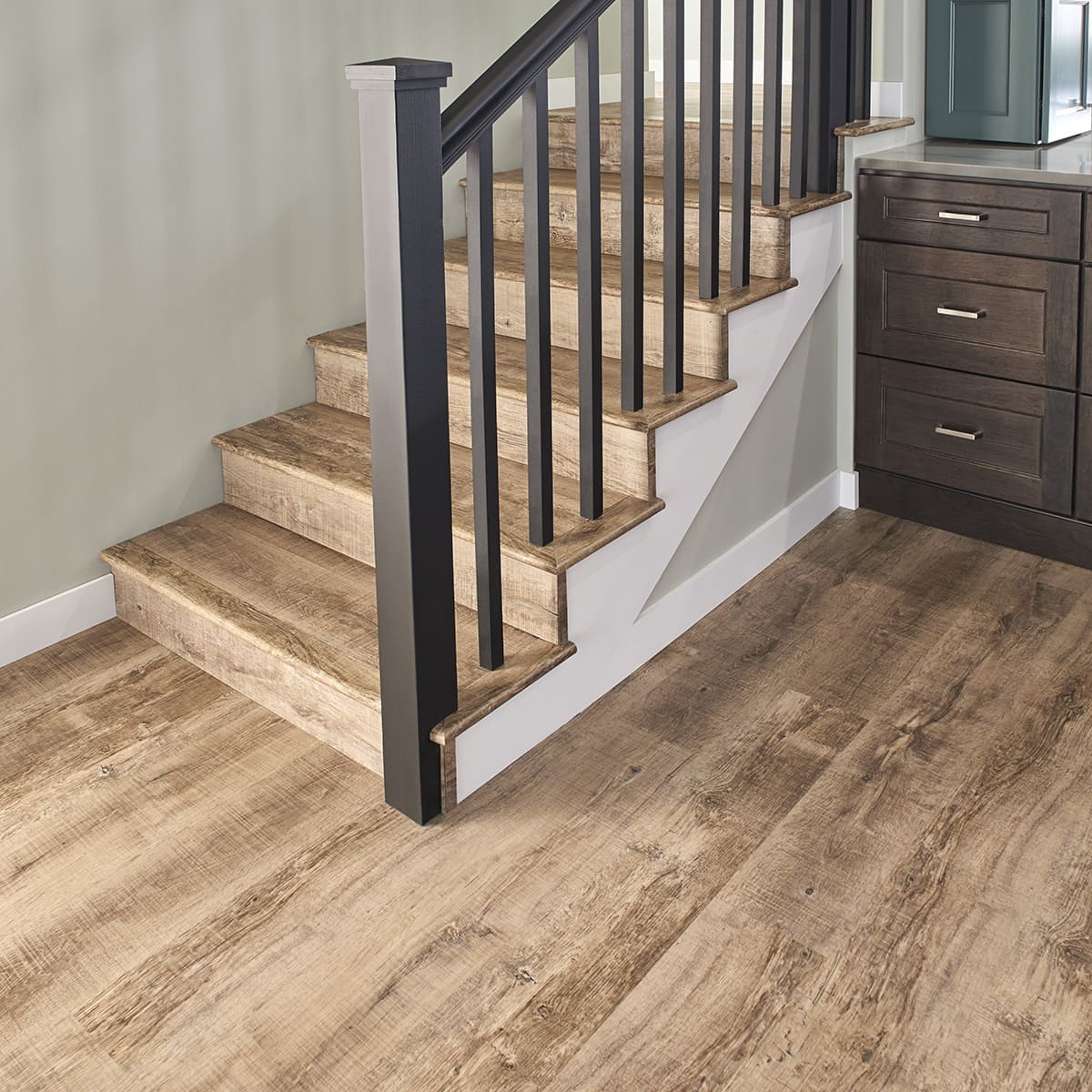
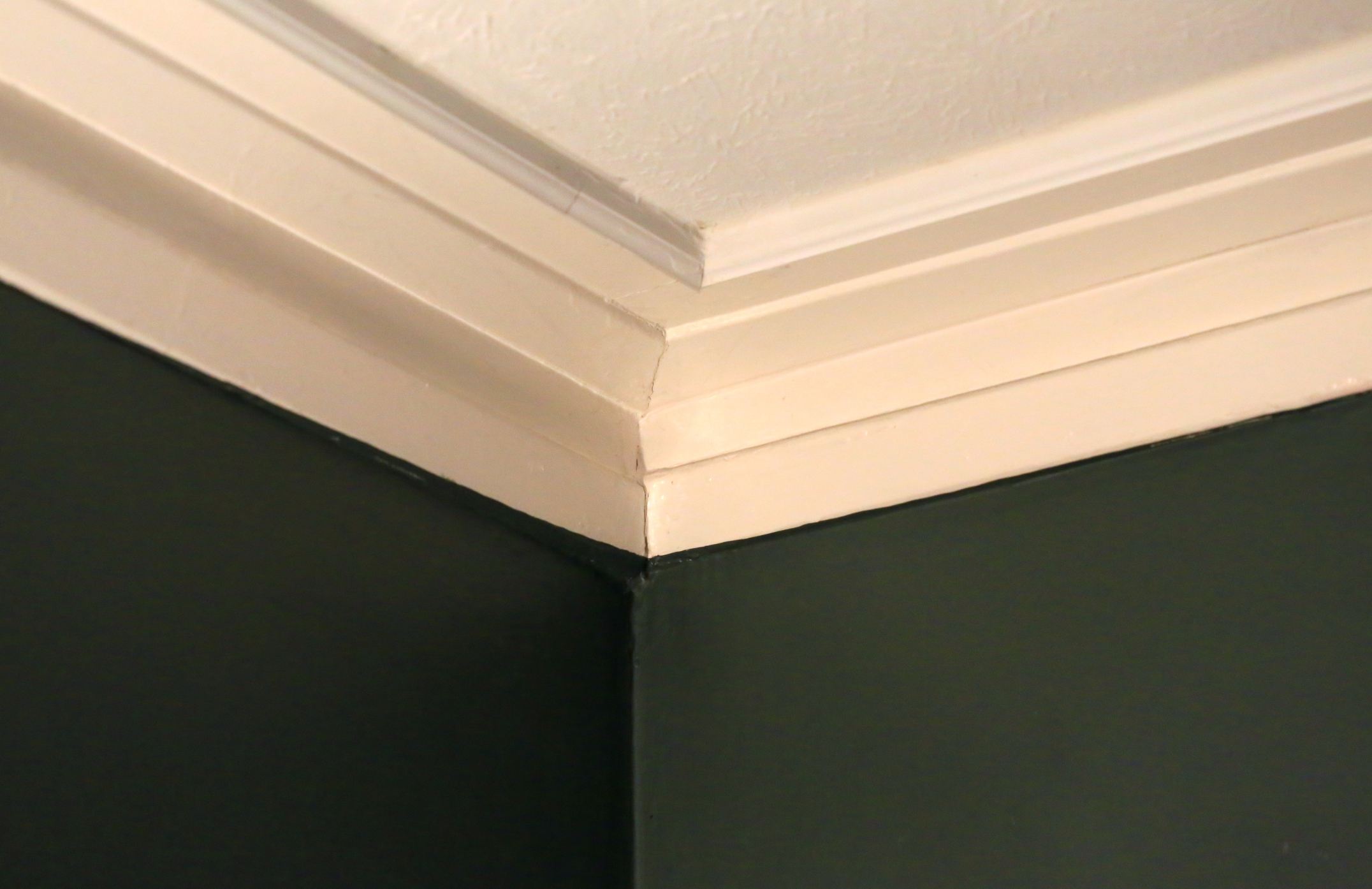
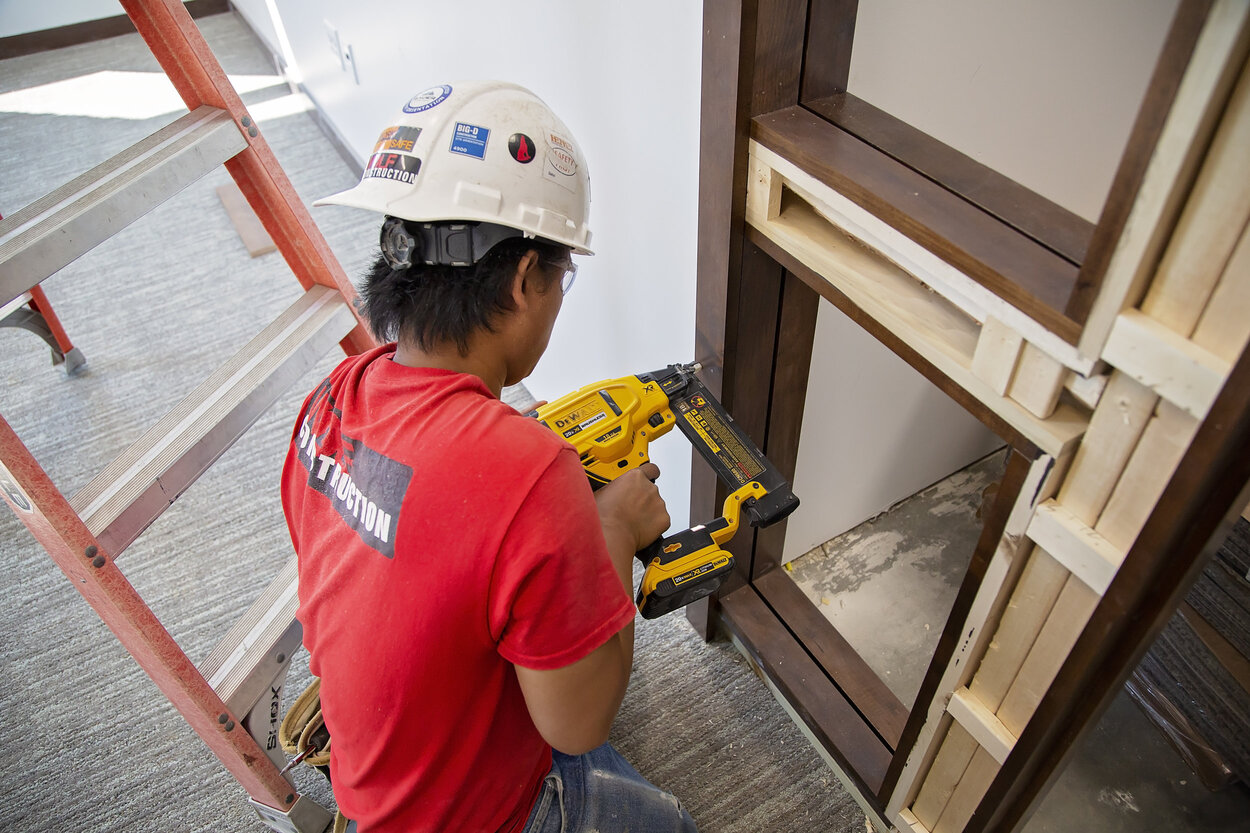

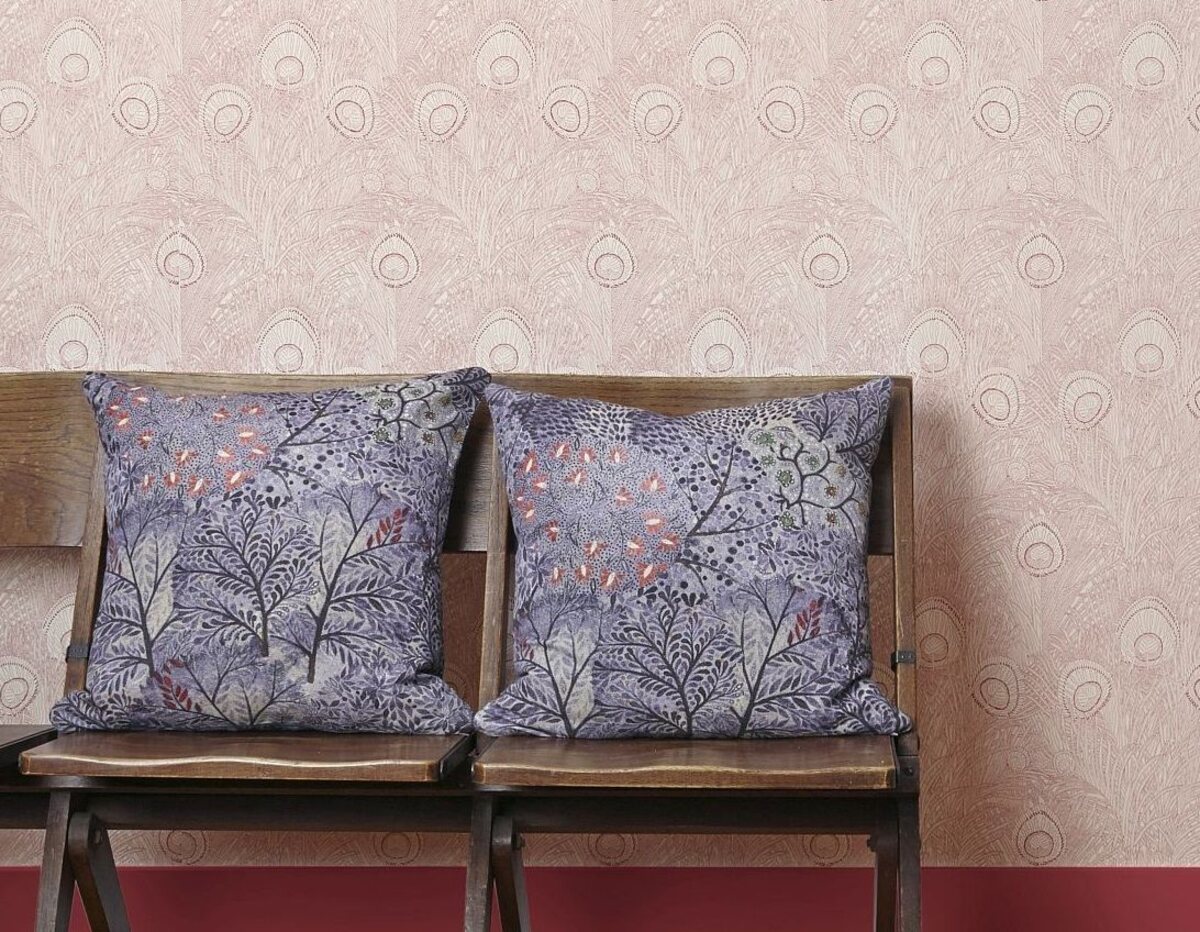



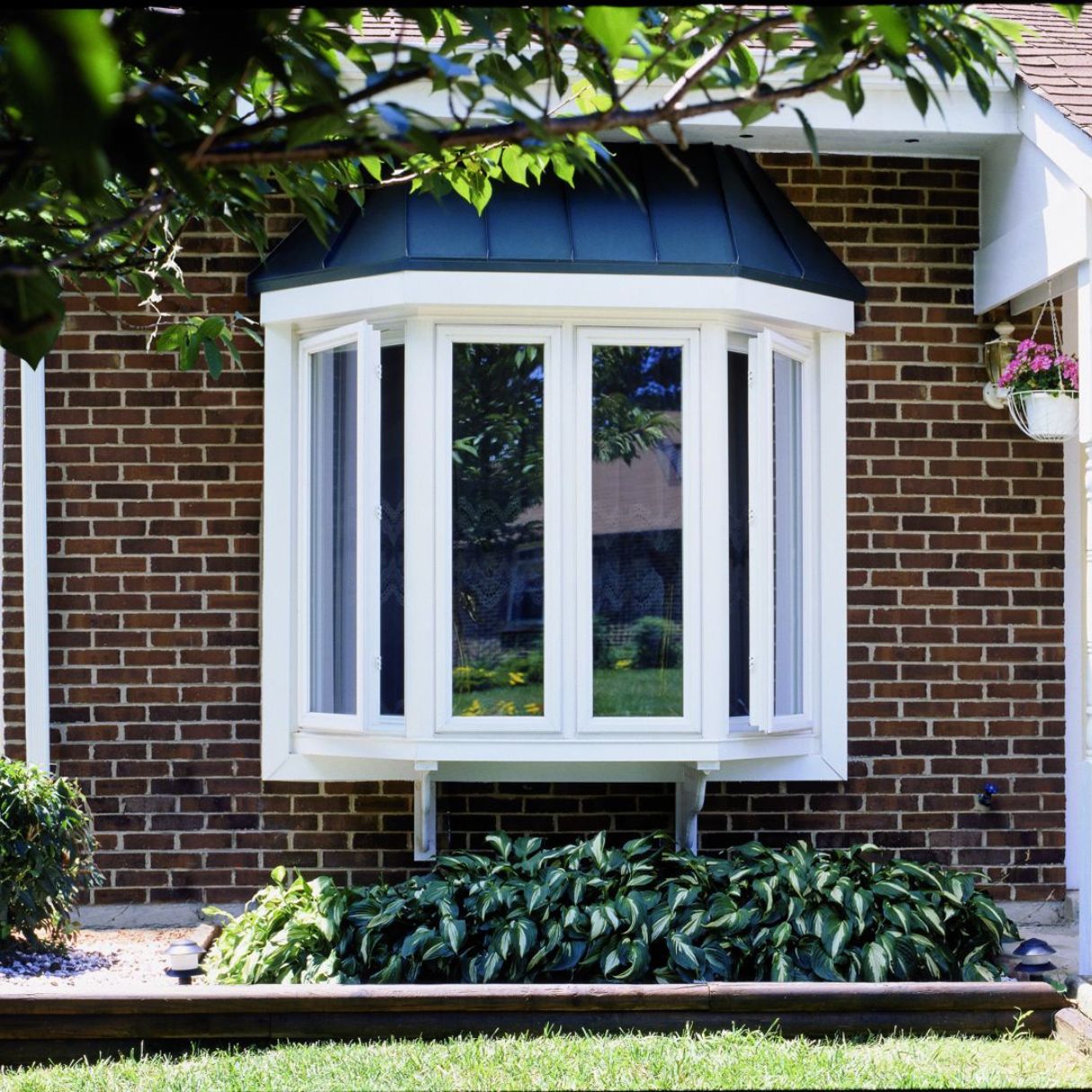


0 thoughts on “Distinctive Trim Work Ideas”